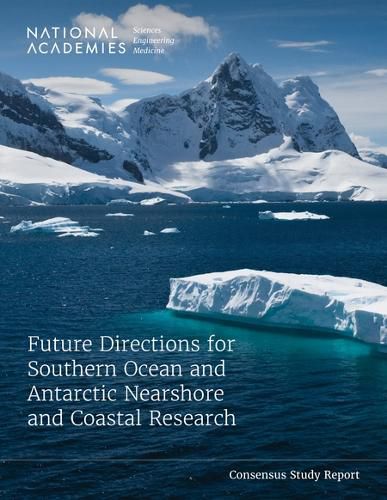Readings Newsletter
Become a Readings Member to make your shopping experience even easier.
Sign in or sign up for free!
You’re not far away from qualifying for FREE standard shipping within Australia
You’ve qualified for FREE standard shipping within Australia
The cart is loading…






Antarctica hosts some of the harshest and most remote environments on Earth - and it is a region of vital importance for scientific research. The environment and position of Antarctica on the globe mean that research conducted there can offer unique insights on important Earth processes, including rising sea level, the carbon cycle, ecosystem structure. As the climate warms, data gathered from Antarctic research will be essential to understanding how Earth processes are changing and the potential social, economic, and health impacts on both U.S. and global populations.
This report identifies the highest priorities for research in the Southern Ocean and nearshore and coastal Antarctica, as well as gaps in current capabilities to support this research. Global sea level rise, heat and carbon budgets, and changing ecosystems are the three highest-priority science drivers for research in the region. To address those drivers and maintain a robust U.S. research presence in this vitally important region, investments are needed in the U.S. Antarctic program and its research platforms, including the development of new technologies and the replacement of aging icebreaking research vessels. Additionally, the U.S. should strengthen relationships with other nations' Antarctic programs that can help support these essential science drivers.
Table of Contents
Front Matter Summary 1 Introduction 2 The National Antarctic Program 3 The Impact of Antarctica and the Southern Ocean on Global Sea Level 4 The Impact of Southern Ocean Circulation and AirSea Exchange on Global Heat and Carbon Budgets 5 The Impact of Environmental Change on Antarctic and Southern Ocean Biota and their Ecosystem Services 6 Essential Capabilities References Appendix A: Committee Member and Staff Biographical Sketches Appendix B: Capabilities of Potential Partners' Vessels
$9.00 standard shipping within Australia
FREE standard shipping within Australia for orders over $100.00
Express & International shipping calculated at checkout
Antarctica hosts some of the harshest and most remote environments on Earth - and it is a region of vital importance for scientific research. The environment and position of Antarctica on the globe mean that research conducted there can offer unique insights on important Earth processes, including rising sea level, the carbon cycle, ecosystem structure. As the climate warms, data gathered from Antarctic research will be essential to understanding how Earth processes are changing and the potential social, economic, and health impacts on both U.S. and global populations.
This report identifies the highest priorities for research in the Southern Ocean and nearshore and coastal Antarctica, as well as gaps in current capabilities to support this research. Global sea level rise, heat and carbon budgets, and changing ecosystems are the three highest-priority science drivers for research in the region. To address those drivers and maintain a robust U.S. research presence in this vitally important region, investments are needed in the U.S. Antarctic program and its research platforms, including the development of new technologies and the replacement of aging icebreaking research vessels. Additionally, the U.S. should strengthen relationships with other nations' Antarctic programs that can help support these essential science drivers.
Table of Contents
Front Matter Summary 1 Introduction 2 The National Antarctic Program 3 The Impact of Antarctica and the Southern Ocean on Global Sea Level 4 The Impact of Southern Ocean Circulation and AirSea Exchange on Global Heat and Carbon Budgets 5 The Impact of Environmental Change on Antarctic and Southern Ocean Biota and their Ecosystem Services 6 Essential Capabilities References Appendix A: Committee Member and Staff Biographical Sketches Appendix B: Capabilities of Potential Partners' Vessels